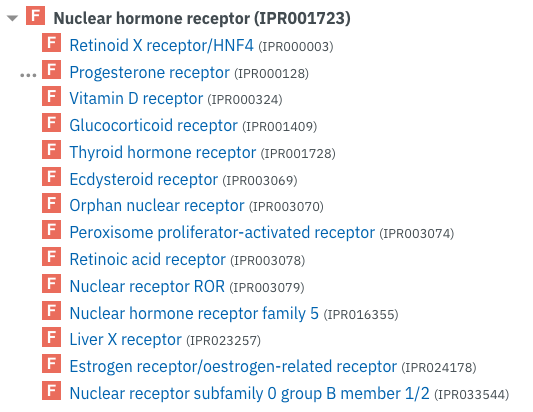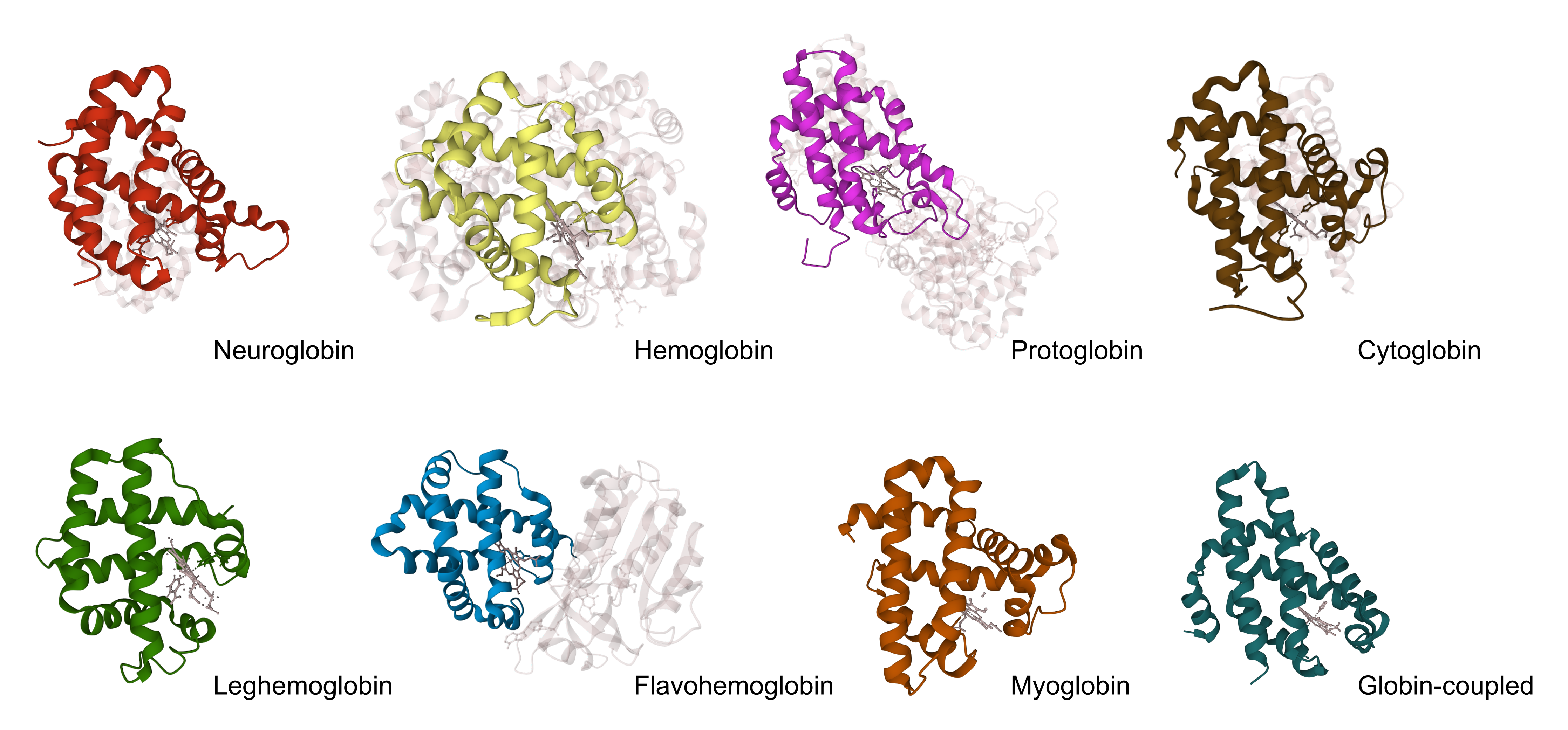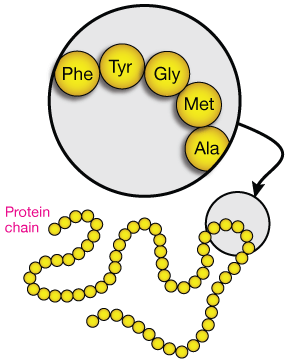Protein families card game¶
Protein families game¶
The Protein families game contains 42 cards divided in 7 families (6 protein cards each), the goal is to collect the maximum number of families by asking the other players for the protein cards you are missing in your hand to complete your families. The game logic is similar to the Happy families and Go Fish games.
The game is available to play online by clicking on the image below, or you can put a request to organise the Protein families game activity in person.
Game rules¶
The game rules in English can be downloaded.
The video below explains how to interact with the different objects in the online platform.
Translation¶
We are looking for volunteers to help us translate the game in different languages to increase its accessibility. Please contact us if this is something you’d like to do.
Understanding the biology¶
What is a protein?¶
A protein is a long molecule made up of small units known as amino acids. You can visualise a protein as a pearl neckless where each pearl is an amino acid. These amino acids are found mainly in food. The amino acids required to make proteins can be obtained from the proteins we eat, or produced by the body.
The image above is an illustration of the protein amino acid sequence chain. Source: http://xaktly.com/Proteins.html
What are proteins made of?¶
There are 20 amino acids. However, 9 of them are called “essentials” as they can’t be produced by the human body and we obtain them by eating certain protein-rich foods (meat, poultry, fish, dairy products, eggs, and soy), hence it is important to have a good diet with enough protein intake.
How are proteins formed?¶
The amino acids in a protein are ordered in a specific way. This sequence of amino acids determines the shape and function of the protein and its called its primary structure. Proteins can vary in size ranging from 15 to 30,000 amino acids.
One of the smallest proteins is called Aspartame (it is an artificial sweetener used as a sugar substitute in foods and beverages) and is made of only 2 amino acids.
On the contrary, the Titin protein is a giant protein made of 30,000 amino acids, that plays an important role in muscle elasticity.
In addition to the primary structure, proteins have higher order structural levels such as the secondary, tertiary and quaternary structure which define their three dimensional structure and provide them with different functions.

Illustration of the protein folding process from the amino acid sequence to the quaternary structure. Source: https://cdn.kastatic.org/
Where do proteins come from?¶
The way amino acids are organised in the protein isn’t random. Indeed, each sequence is very important, and if an amino acid is replaced by another one (by mistake) the protein might not work properly. The chains of amino acids forming proteins are determined by DNA.
The video below explains how proteins are produced from the DNA sequence.
Source: www.yourgenome.org
As you might have noticed, proteins are necessary for the body to work properly and represent about 60% of the components of a cell. They are always renewed and found in all living cells. They are essential for the cell function and responsible for diverse functions, like cellular structure (collagen), molecule transport (hemoglobin), cell activity regulators (insulin), helping molecules transformation.
What are proteins used for?¶
A human body needs proteins to perform many different functions. Some proteins help control processes in the body. Others transport, or carry, substances from one place in the body to another. Some proteins make up collagen, which helps give structure to cells. Antibodies, which fight infections and diseases, are proteins. Enzymes are also proteins, they help the body digest food and build new cells.
Why are proteins classified?¶
Proteins can be classified into groups when they have a similar chain of amino acids or a similar tertiary structure. These groups often contain well characterised proteins whose function is known. Thus, when a novel protein is identified, its functional properties can be proposed based on the group to which it is predicted to belong.
How are protein classified?¶
Proteins can be classified into different groups based on the families to which they belong, the domains they contain, or the sequence features they possess.
Protein family¶
A protein family is a group of proteins that share a common evolutionary origin (they have a common ancestor), we can identify them as they have related functions and similarities in their amino acid sequence or structure.
Example of a protein family: Nuclear hormone receptors
Nuclear hormone receptors constitute an important family of transcription regulators that are involved in diverse physiological functions. Members of the family include the steroid hormone receptors and receptors for thyroid hormone, retinoids, vitamin D3 and many other ligands. Nuclear hormone receptors are extremely important in medical research, a large number of them is being implicated in diseases such as cancer, diabetes, and hormone resistance syndromes.

List of a few members of the Nuclear hormone receptors family obtained from InterPro IPR001723.

3D Structures of 4 Nuclear hormone receptors: Thyroid hormone (PDB 4lnw), Vitamin D (PDB 3a40), Retinoic acid (PDB 5k13) and Estrogen (PDB 6vjd) receptors.
Protein domains¶
Domains are distinct functional and/or structural units in a protein. Usually, they are responsible for a particular function or interaction, contributing to the overall role of a protein. Domains may exist in a variety of biological contexts, where similar domains can be found in proteins with different functions.
Example of a protein domain: Globins
Globins are involved in binding and/or transporting oxygen. They have evolved from a common ancestor and can be divided into three groups: single-domain globins, and two types of chimeric globins, flavohaemoglobins and globin-coupled sensors.
The major types of globins include:
Neuroglobin is found in vertebrate brain and retina
Hemoglobin transports oxygen from lungs to other tissues in vertebrates
Protoglobin is found in archaea
Cytoglobin is an oxygen sensor
Leghemoglobin is found in leguminous plants
Flavohemoglobin provides protection against nitric oxide
Myoglobin is responsible for oxygen storage in vertebrate muscle
Globin-coupled sensors

Cartoon representation of the globins domains structures generated using mol*. They are all made of eight alpha helices.
Family- and domain-based classifications are not always straightforward and can overlap, since proteins are sometimes assigned to families by virtue of the domain(s) they contain.
Sequence features¶
Sequence features are groups of amino acids that confer certain characteristics upon a protein, and may be important for its overall function. Sequence features differ from domains in that they are usually quite small (often only a few amino acids long), whereas domains represent entire structural or functional units of the protein. Sequence features are often nested within domains.
Protein classification in InterPro¶
Multiple groups of scientists work on protein classification and are using different methods and criteria to generate their categorisation. InterPro is the main resource for protein classification at the European Bioinformatic Institute. It regroups the protein classification from multiple databases into a single searchable resource. Having all this information available in a single location is very convenient and time saving for the scientific community, as the researchers don’t have to look for information in different places. InterPro also provides a tool, called InterProScan, to help the function prediction of newly discovered proteins.
Ask questions or give feedback¶
Do you have questions about protein or protein classification?
Suggestions to improve the protein families game?
Would like us to run the Protein families game activity in your school or get a printed copy?
